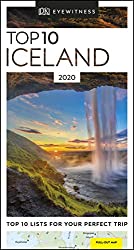The challenges you may face
And tips on how to overcome themYep, I'm just an amateur. I have made some money from my photography, but it has been, and will always be, an enjoyable hobby. Sure, I understand my way around a camera, and I have spent some money over the years, so I have some nice kit.
However, this post is not about how you need to spend £££'s to capture the Northern Lights. It's about how I caught the Northern Lights on our Icelandic Road trip in 2018, and if lady luck is on your side, how you can maximise the experience.
I'll also share something I learnt that will perhaps show you how to capture something not seen with the naked eye.
Experiencing the Northern Lights is a wonderful feeling, especially if it's only something you'd typically see on TV. So, don't sacrifice the experience to get the perfect shot. Experience the moment; hopefully, with my help, you'll also be able to capture it.
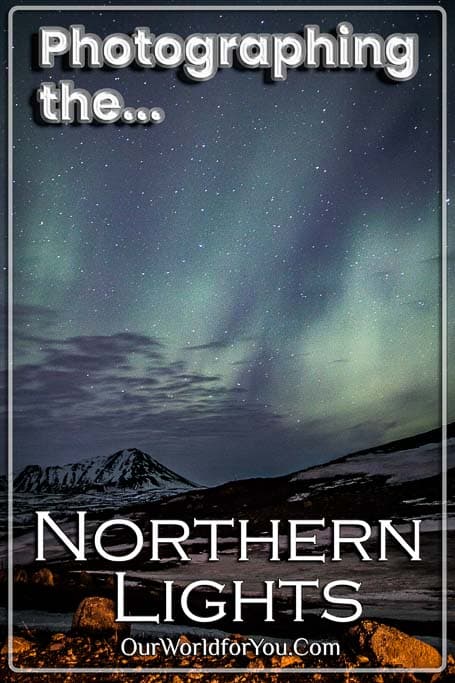
Tips for photographing the Northern lights
The kit bag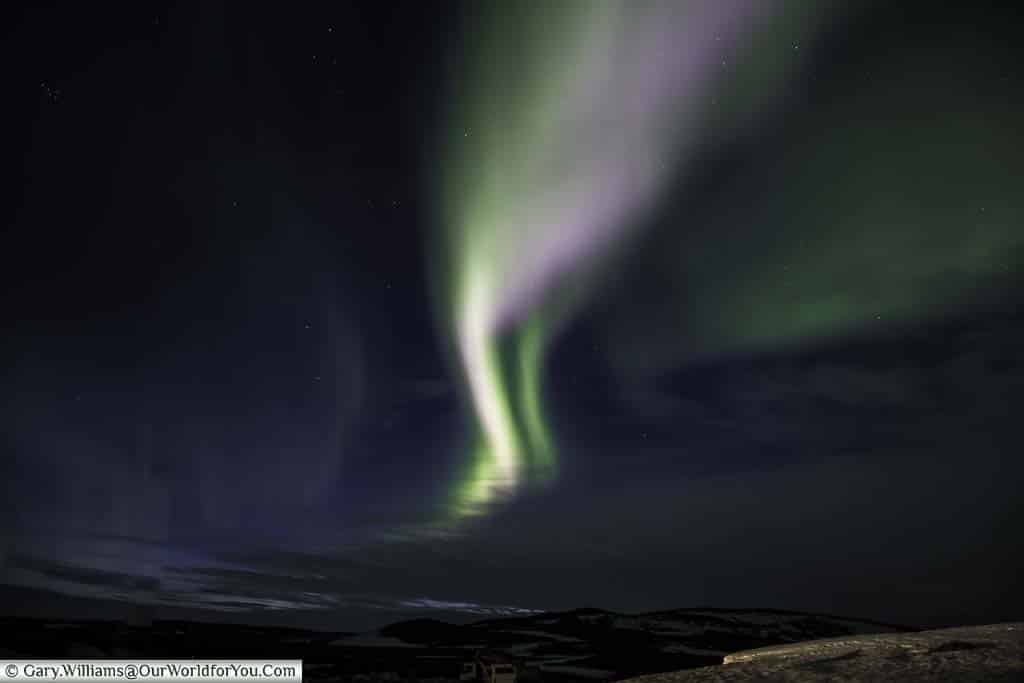
Sunset & darkness times
The Icelandic weather forecast
The KP-index
The Icelandic Aurora forecast
As I said, it needs to be dark to see the Northern Lights. However, you will want to find your ideal location to capture the experience, so you may want to go out whilst it's still light to find your perfect spot.
Now let me take you through each of the items.
Planning your trip to Iceland
So you're planning a trip to the Land of Fire and Ice? There is so much to see and do in Iceland that you'll wish you were staying longer. To ensure you make the most out of your visit, head over to the official website of Visit Iceland for a little help and guidance.
Have fun!
Understanding the Northern lights
Sunset & darkness timesI used https://www.timeanddate.com to check the times, and it provides a little more than just sunset. You know that when the sun sets, it doesn't suddenly get dark; there's a period where there's still light in the sky, you know, twilight.
Well, https://www.timeanddate.com gives you the following
Daylight
Civil Twilight
Nautical Twilight
Astronomical Twilight
Night
When you won't see the Northern Lights
The Icelandic weather forecastIf it's raining or completely cloudy, you're not going to see the Northern Lights. (And the prize for stating the obvious goes to …)
So if you've checked https://en.vedur.is/weather/forecasts/areas/ and drilled into your area and you're out of luck, then tuck into that good book and let's hope tomorrow's a better day.
The Northern Lights key metric
The KP IndexSo this is the magic number provided by Iceland's Meteoric Service.
KP Index scale ranges from 0 to 9;
0-2: Low
2-3: Moderate
4-6: A big solar storm is coming
7-9: Highly unusual
Another check for the Northern Lights
The Icelandic Aurora forecast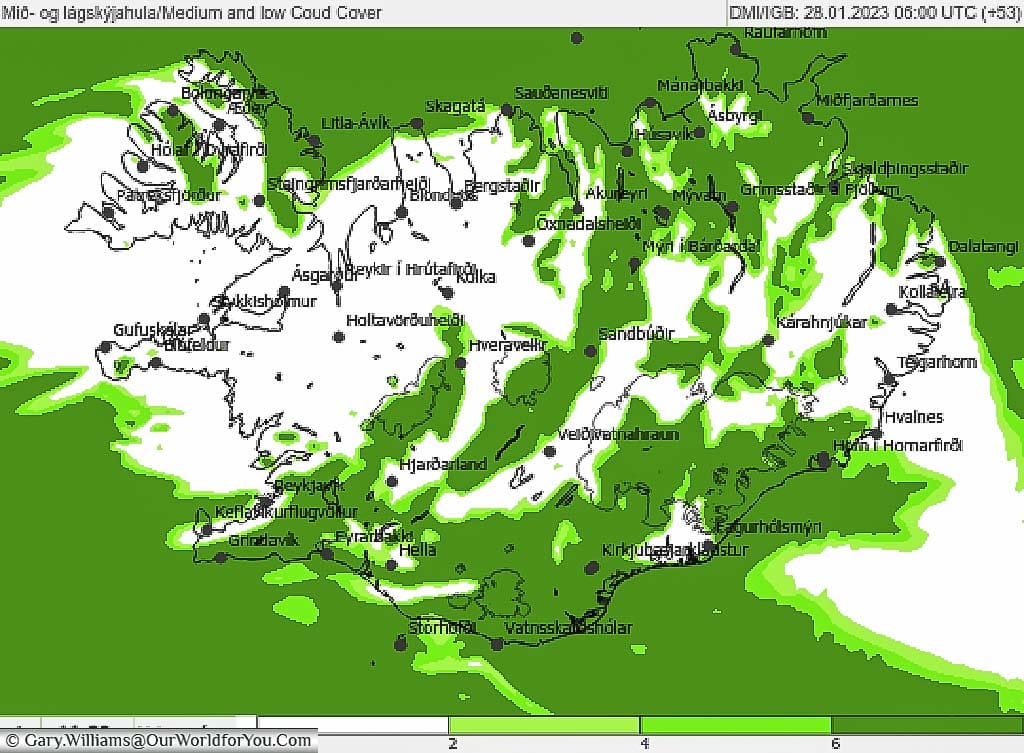
Capturing the Northern Lights
Based on our experienceAs I said, this post is based on experience. We were on day 6 of our 13 day Iceland Road Trip around the country, and we were heading from Egilsstaðir to Reykjahlíð.
The signs didn't look good though, we had an index of 2 in the late afternoon, but the weather was forecast to be clear for the evening.
We checked into the Fosshotel Myvatn, boy was it nice, so we booked our table for the evening in the restaurant.
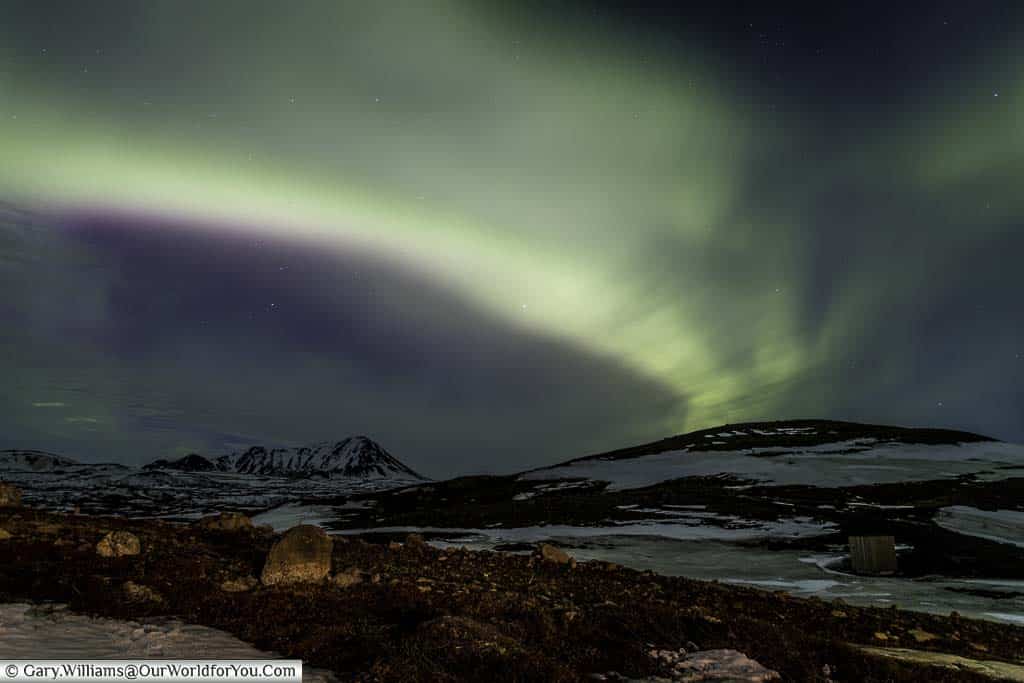
Picking your accommodation in Iceland
Breakfast included or available nearby.
Scooby snacks along the way can be expensive.
Parking is a requirement, as this is a road trip after all.
Nearby cafés/eateries, or onsite restaurant for the evening.
Preferably a close-by fuel station; they can be few and far between en route.
Photographing the Northern Lights
The equipment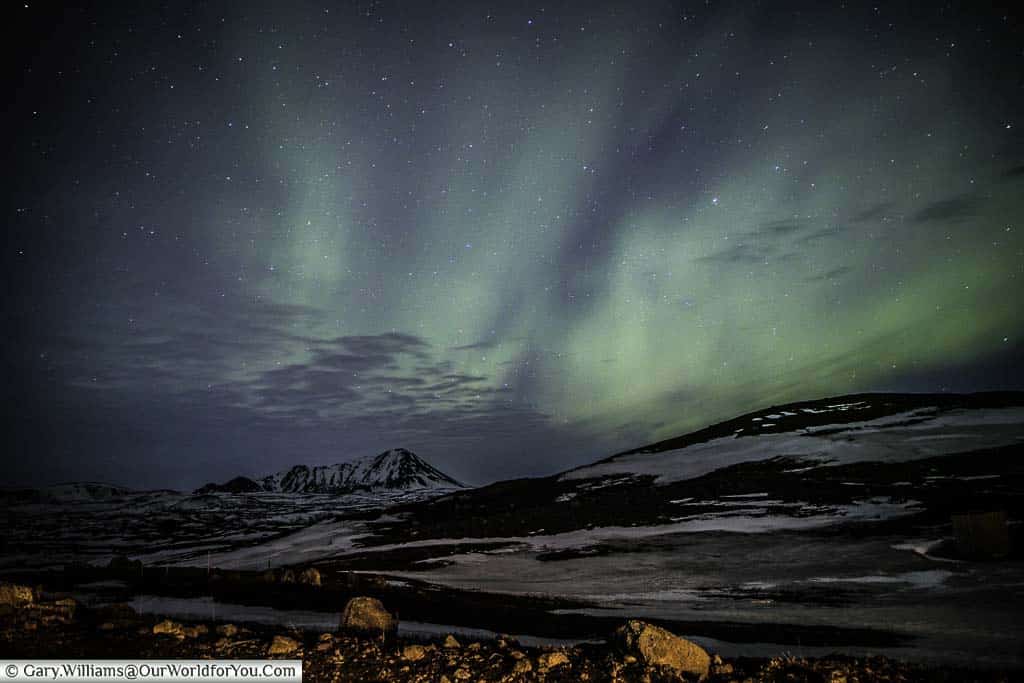
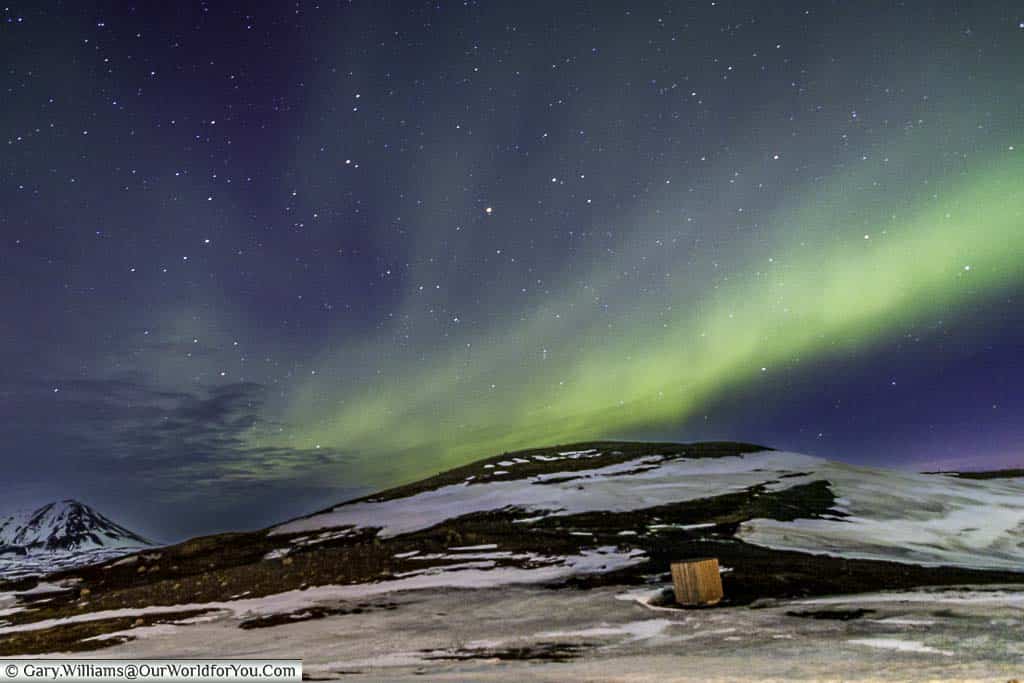
If you're tempted to tour the Land of Fire and Ice and would love to discover the whole country, then take a look at this DK Eyewitness book. This Top 10 Pocket Travel Guide is invaluable, I find them extremely informative, easy to follow and the pictures and maps tempt you into searching for more.
You can now grab the revised copy.
How to photograph the Northern Lights
The settings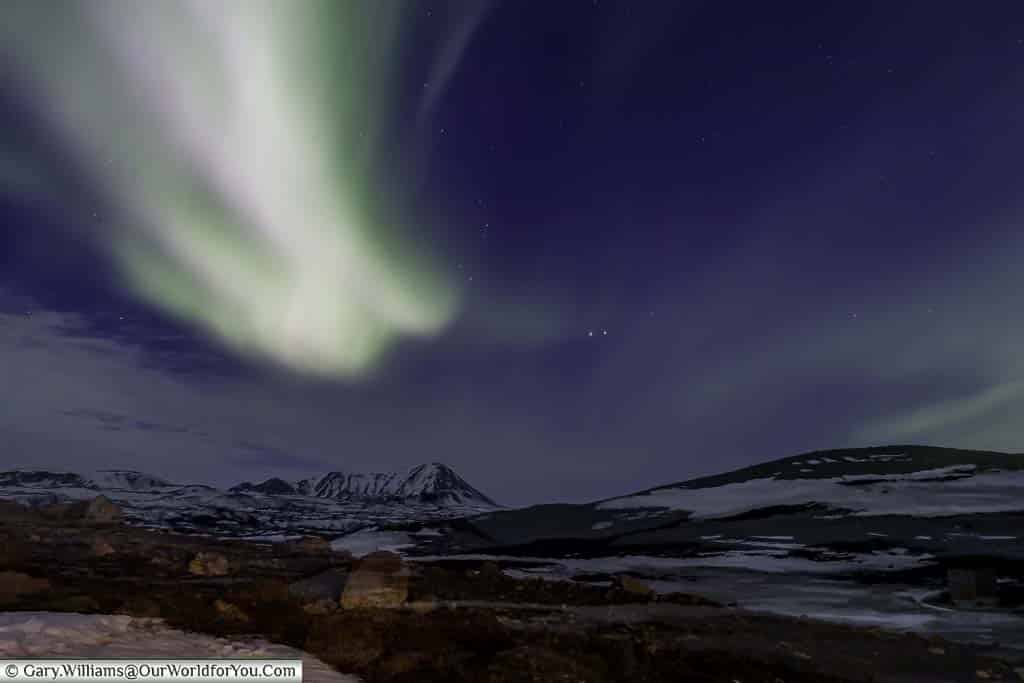
One of the lessons I have learnt is to understand the correct exposure. You see, photography is very simple and relies on some very basic principles. Light is recorded by a sensor. The trick for the photographer is getting that balance right.
The tools we have at our disposal depend from camera to camera. Usually, to control the amount of light we let in we have the shutter speed and the aperture. This is then recorded on the sensor. The ISO settings control the sensitivity of the sensor.
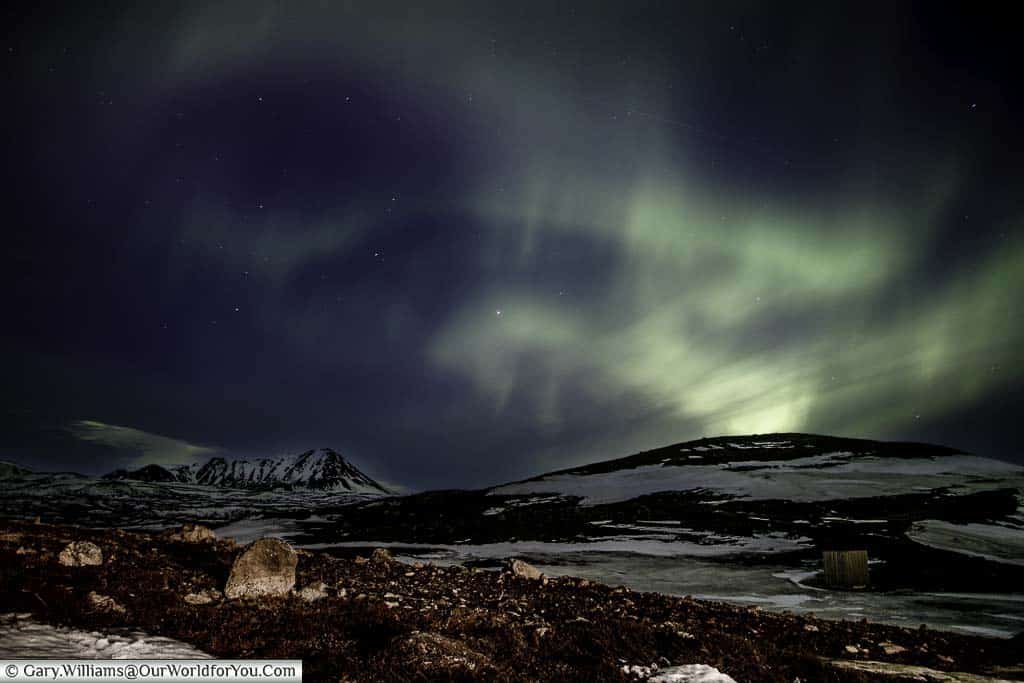
Let's start with the ISO settings. This will vary from camera to camera, but I would recommend ISO 200-800. You are going to want to keep this as low as possible to keep the digital noise to a minimum.
Next, it's the aperture: You want to control the amount of light hitting the sensor, so ideally, you want to open the lens up to allow as much light as possible. For my EF 24-105mm f/4L IS II USM. I opened the lens up to f/4.
Shutter speed: Even with the aperture that wide open, I need to have a long exposure - 30 seconds on average.
Finally, it's the focus. The secret here is to turn off autofocus; in the low light the camera will probably struggle to find a suitable focus point, so set one manually. As the aperture is wide open, you'll have a shallow depth of field, so you'll want to set a reasonable mid-point.
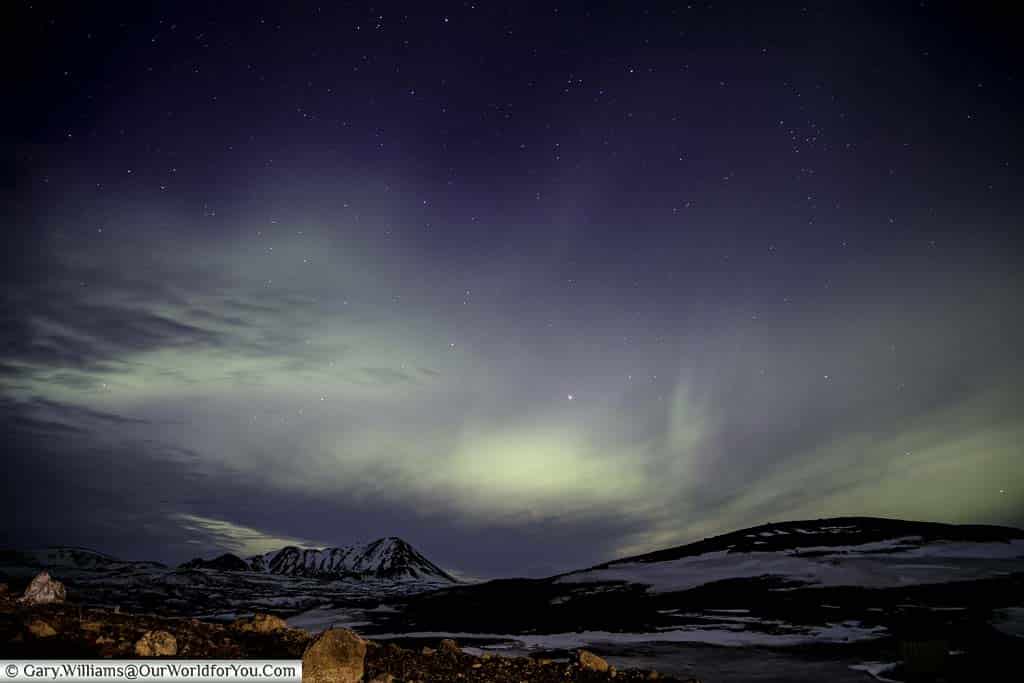
Photographing what you don't see
Something I noticed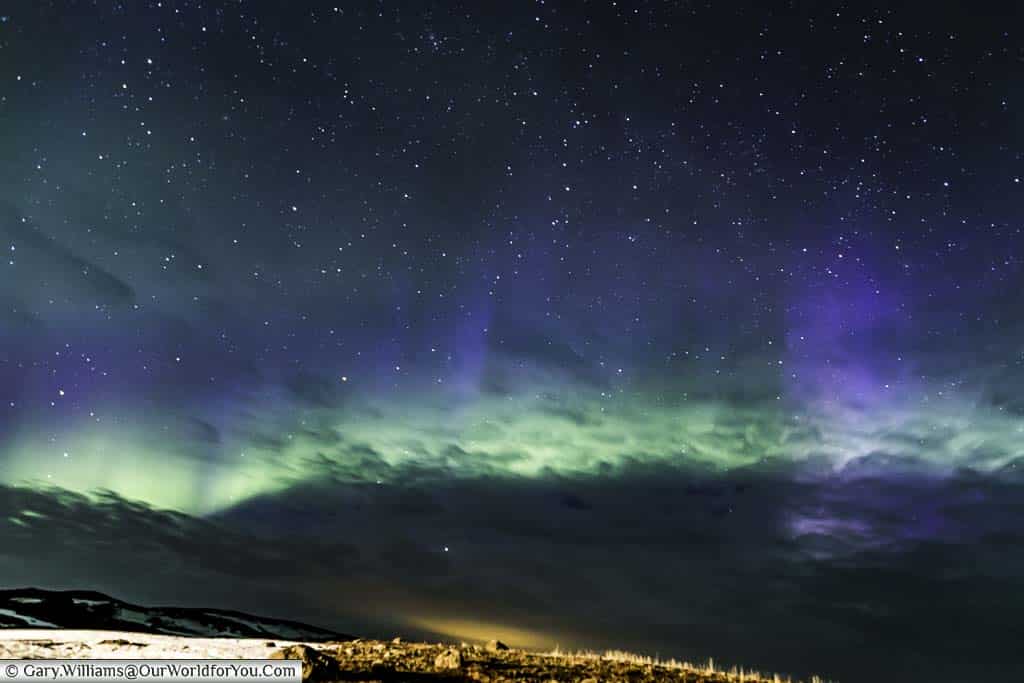
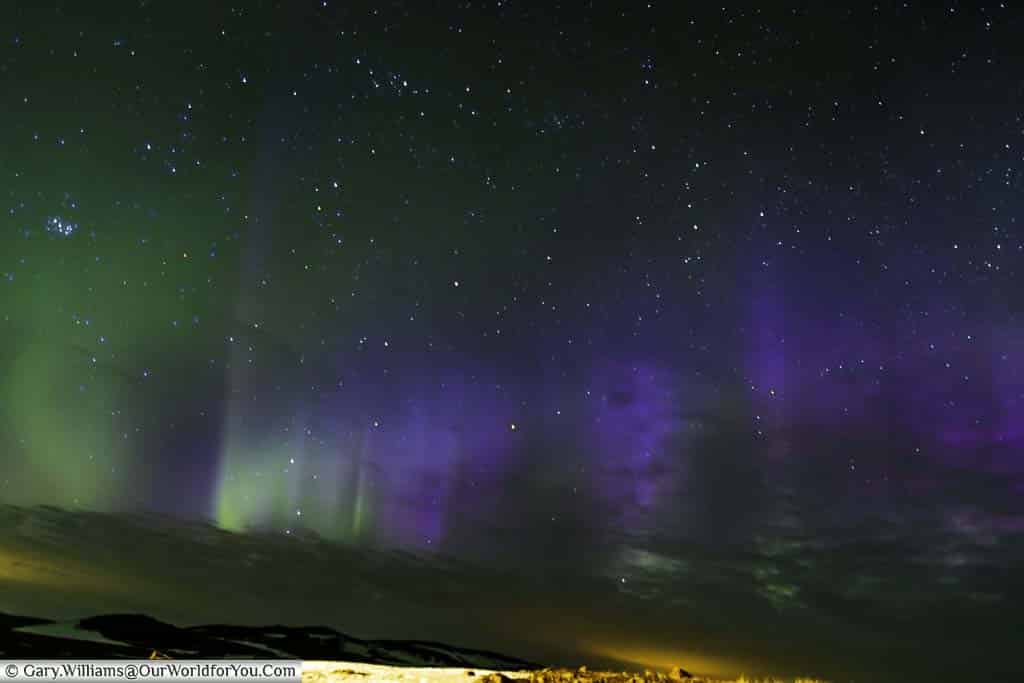
Finding the right car for your Icelandic Road Trip
Discover Iceland’s enchanting Ring Road with its rugged landscape or the waterfalls and geysers around the Golden Circle for yourself.
If you want to explore Iceland's F-Roads, you must have a 4x4, but we'd recommend one anyway for the improved driving position, and if the weather turns, you have a touch of added protection.
We recommend Rental Cars as they search multiple well-known car hire brands and discovers the deals that suit you the best.
Then the luck run out
But at least we did get to see nature's magic.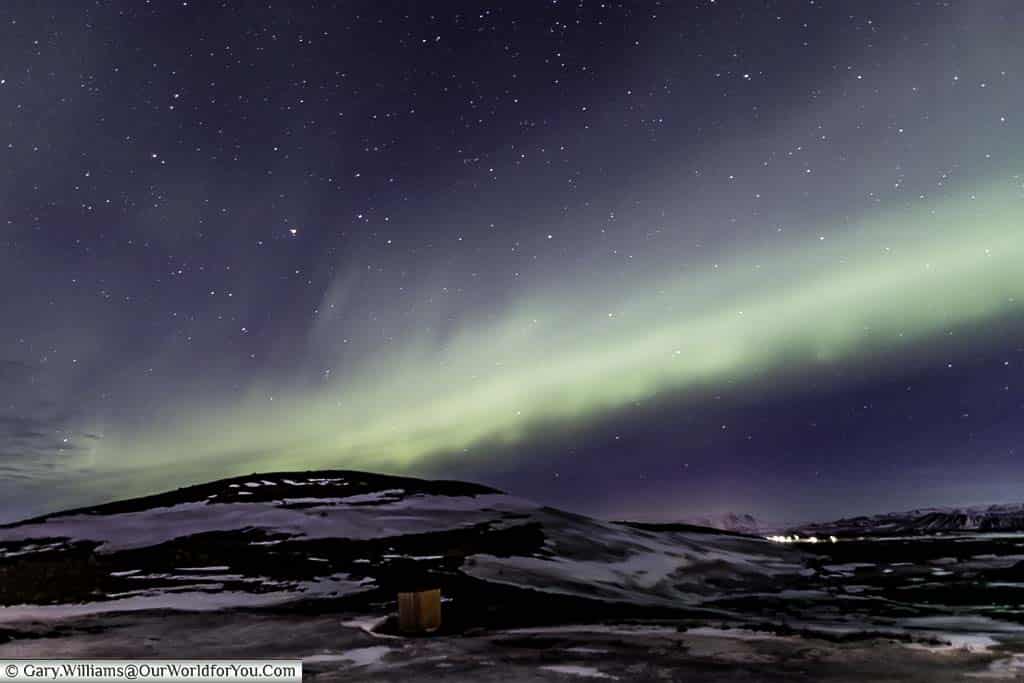
Helpful?
* This post may contain links to affiliated sites where we earn a small commission at no additional charge to you.
